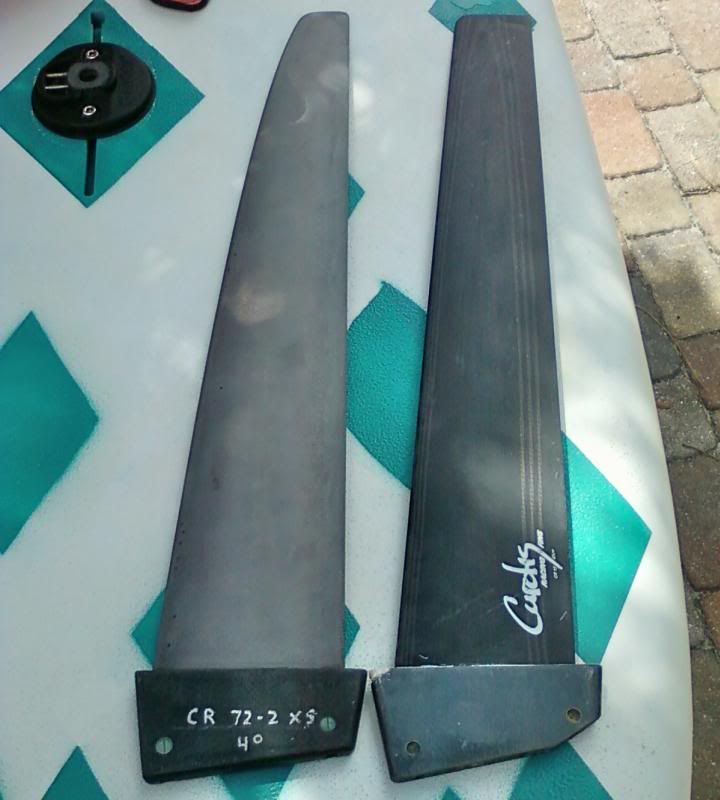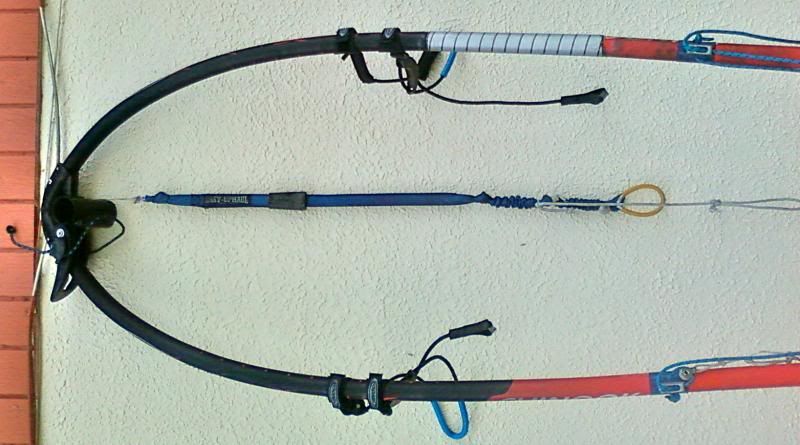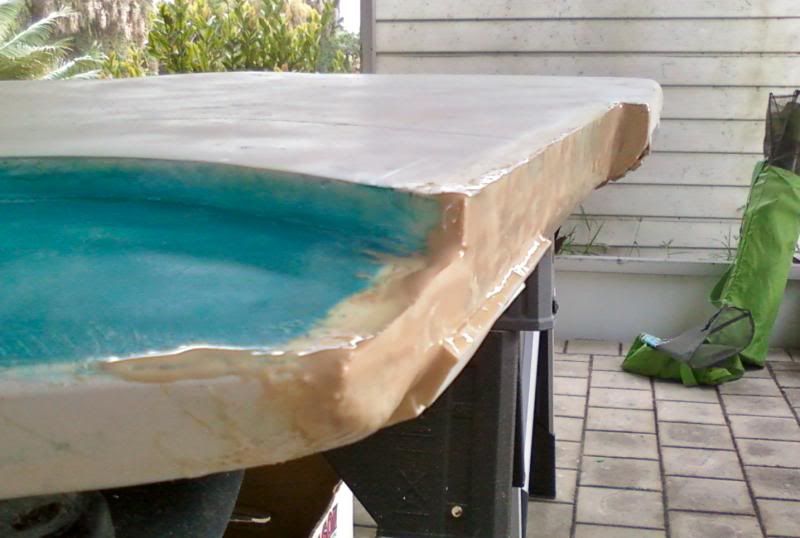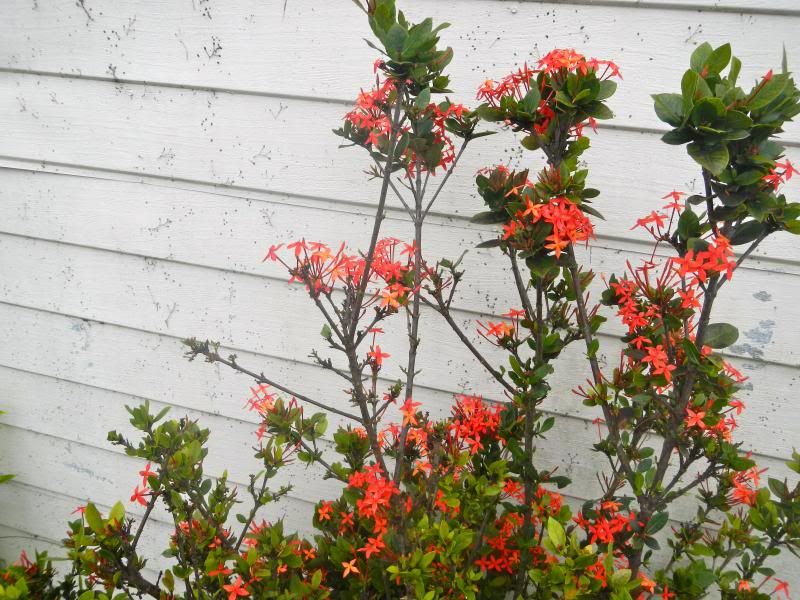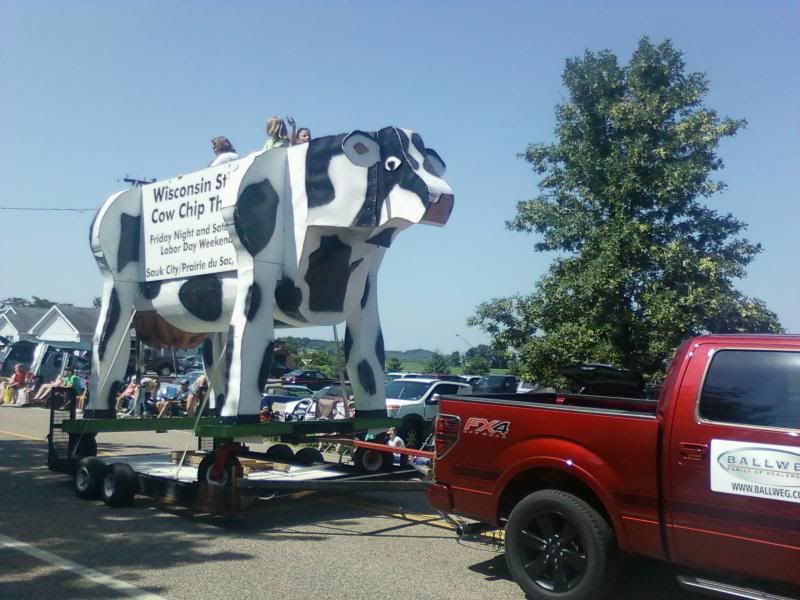This season in the subtropics, though, I'm feeling cheery in a different way. For one thing, the weather has been SUBLIME, ranging from pleasantly cool (AC off, windows open) to ideally summery (walk the dog wearing just your bathing suit, jump in the river to cool off midway through the walk). Also, our little municipality of Bonita Springs is making a good effort to bring a festive mood, with the palm trees in the park wrapped in lights, and lots of free concerts and stuff at the band shell. In the Latin neighborhood across the street, lighted yard displays make a night-time color show that compliments the daytime show provided by the brightly blooming bougainvillea and other exotic foliage.
Also, the windsurfing and paddleboarding have been pretty good. Not too many days of true shortboard conditions, but lots of formula windsurfing weather, and even a few good swells for SUP and WindSUP. I think one time I had to wear a shorty wetsuit, but otherwise it's still boardshorts warm.
Here's a track from a 16 mile long formula windsurfing session on Saturday. Winds were about 10 knot from the SW and I used an 11.0 Gaastra Nitro IV sail with a 70 cm F4 fin. Compared to my old fin, this F4 definitely gives me better upwind angles, making it less obvious which parts of my track were going upwind and which parts were going downwind. (In my old tracks you could tell that compressed zig zags were going upwind and stretched zig zags were going downwind.) There was a light wind zone within about 1/4 mile from shore, which is why you see my angle to the wind "pinched" after tacks near shore.

Another fun thing that I've been able to focus on more since the teaching semester ended has been some tweaks and modifications to my boards.
Tweak #1- Redoing the daggerboard gasket on the WindSUP.
The Exocet WindSUP 11'8" is a great board but it has a crappy "Allgaier" daggerboard system that includes poorly fitting, loose gaskets. I'd been meaning to rig up something better for a while, but didn't get around to it until one of the gaskets actually peeled off while I was sailing. After that I disassembled the gasket and cut a piece of flat PVC board to cover the opening. That was great as far as looks and hydrodynamics were concerned, but it made the daggerboard unusable. Phase two of the modification was cutting a slot in the PVC for the daggerboard to go through, and getting a piece of floor border vinyl to make a gasket over it. I'm pretty pleased with how it turned out.
Phase 1- Just the pvc board covering the slot

Phase 2- Making a vinyl gasket

Phase 3- Putting it all together

Tweak #2- Grafting a planing rocker onto my surf-rockered SUP.
I love my Angulo Surfa 10'4" as a SUP, but as a windsup it leaves something to be desired because it has too much tail rocker to plane. Since I first got the board I've been mentally picturing what it would be like if it had a step-tail, similar to the Exocet WindSUP. Finally I decided to bite the bullet and actually attempt to graft a flat section onto the tail. I agonized a lot about what type of outline shape the flat section should have, and I sketched lots of different possibilities on the bottom of the board. Eventually I decide to go for a "swallow tail" with moderate "winger" cut-outs, and I cut the tail outline into pink insulation foam slabs that I got from Home Depot. The height of the step in the step-tail was dictated by the thickness of those slabs (~1"), but it happens to be about right for making the last two feet of the board bottom flat. The hard part has been fairing the slabs to the right diagonal angle. I started by making a frame and using a saw, then after I expoxied the slabs to the board I used a rasp and a straight edge to take some more material off. I think I almost have it now, and I'm hoping to put the first layer of fiberglass on it today. I'll finish the modification, including dropping a US box fin box in each lobe of the swallow tail for a twin-fin, after I get back from family visits up North. Something to look forward to for the new year.




